IDF 2000: Intel Pentium 4 (Willamette)
Introduction
Andy Grove, Albert Yu and Pat Gelsinger.
Shortly before arrival on your flight to Palm Springs, California, one has the uneasy feeling that Intel has transported you into the desert. It’s only when you’ve actually touched down that you realize what Palm Springs really is. The town, located on an oasis and originally Cahuilla Indian territory, is surrounded by 3,000 meter high mountains — some of which even have ski resorts. This was the last time that Palm Springs was the scene of the Intel developer Forum (IDF) which will move back to the Silicon Valley homelands (to be more precise: San Jose) in the future.
The event began with the keynote of ex-CEO Andy Grove who has obviously still not fully recovered from his long bout of illness. After a long speech concerning the re-orientation of the company in the direction of the Internet and networking (financial analysts love this patter because it’s still in fashion), good old Andy reverted to the ‘original’ core business: processors. And then things speeded up dramatically. Together with Dr. Albert Yu, he presented not only a 1 GHz Pentium III, but Yu also went to demonstrate a Willamette processor apparently running at 1.5 GHz on a separate machine.
Let’s take a look at the facts. The gigahertz Pentium III was compared with its 533 MHz predecessor using a benchmark. A secondary tool invoked a calculation-intensive process, namely the conversion of a video into MPEG-2 format. And then came the big ‘aha!’ effect: the gigahertz processor was about twice as fast as the 533 MHz processor. At least this presentation had one convincing argument in its favor: the comparison was made with the help of the well-established application Ligos LSX. In their chase for impressive headlines, Intel didn’t take a backseat. In their first presentation of the Willamette processor (alias Pentium IV), Intel apparently preferred to flex its muscles rather than convince Tom’s Hardware. The air-cooled Willamette chip, hidden from the eyes of the public in its sealed PC case was apparently clocked at 1. 5 GHz. At least that’s what the Intel Frequency ID utility displayed. Note that the utility is a proprietary product of Intel and not a frequency checker that we use and respect as such. Albert Yu, who admitted that the test object was ‘first silicon’, started a 3D graphics demo and whispers flew through the rows of reporters and analysts who were less familiar with the technical possibilities. At least Intel was successful in one respect: they out-maneuvered AMD again.
5 GHz. At least that’s what the Intel Frequency ID utility displayed. Note that the utility is a proprietary product of Intel and not a frequency checker that we use and respect as such. Albert Yu, who admitted that the test object was ‘first silicon’, started a 3D graphics demo and whispers flew through the rows of reporters and analysts who were less familiar with the technical possibilities. At least Intel was successful in one respect: they out-maneuvered AMD again.
The Willamette (Pentium IV)
Named after a river in Oregon, Intel presents the Willamette, successor to the Pentium III. It fits in the new 423 socket. Source: Thanks to Daniel «Mr. Big Guy» Wolff of Chip Magazine who pushed CNN and ZDTV crews away and who shoot this picture before being lynched.
‘Back to the sockets’ is Intel’s strategy to produce low-cost high-frequency processors such as the Willamette Pentium IV. Let’s think back to Spring 1997. AMD’s K6 and Intel’s Pentium MMX processors used the same chipsets and sockets.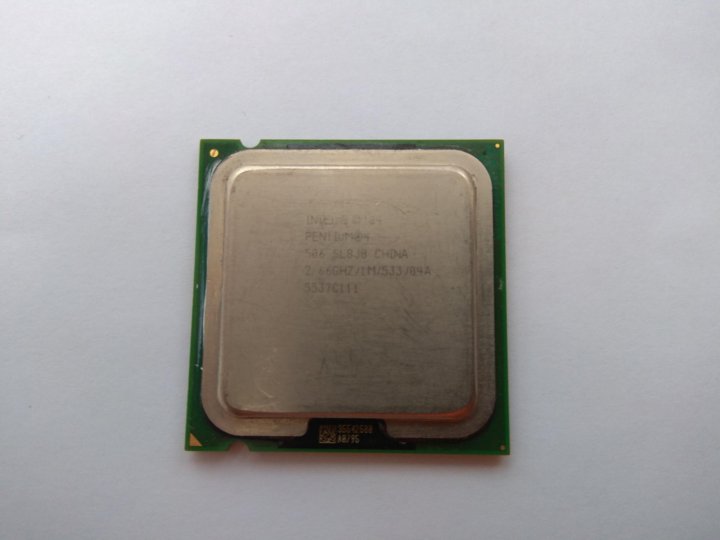 With the appearance of the Pentium II Klamath, Intel deemed it necessary to move away from sockets and into Slot 1 technology. Since then, all the ensuing CPU’s of both manufacturers have required their own chipsets and connectors. Intel’s objective to escape from the common platform had been reached. Sunlin Chou, Vice President and General Manager of Intel’s Technology and Manufacturing Group, sees the future of new desktop processors in sockets again. The Pentium III (Coppermine), Pentium IV (Willamette) and Timna are to be implemented as socketed FC-PGA versions.
With the appearance of the Pentium II Klamath, Intel deemed it necessary to move away from sockets and into Slot 1 technology. Since then, all the ensuing CPU’s of both manufacturers have required their own chipsets and connectors. Intel’s objective to escape from the common platform had been reached. Sunlin Chou, Vice President and General Manager of Intel’s Technology and Manufacturing Group, sees the future of new desktop processors in sockets again. The Pentium III (Coppermine), Pentium IV (Willamette) and Timna are to be implemented as socketed FC-PGA versions.
Two important differences exist. The base material of the packaging of the silicon chip is no longer ceramic, instead it is an organic substrate. This improves the dielectrical and thermal properties. In addition, flip-chip technology will be used rather than wire bonding.
- 1
Current page:
Introduction
Next Page Willamette Functionality
: Chapter 18: Examples and Analysis of PC Overclocking :: PC hardware tuning and acceleration :: Misc :: eTutorials.
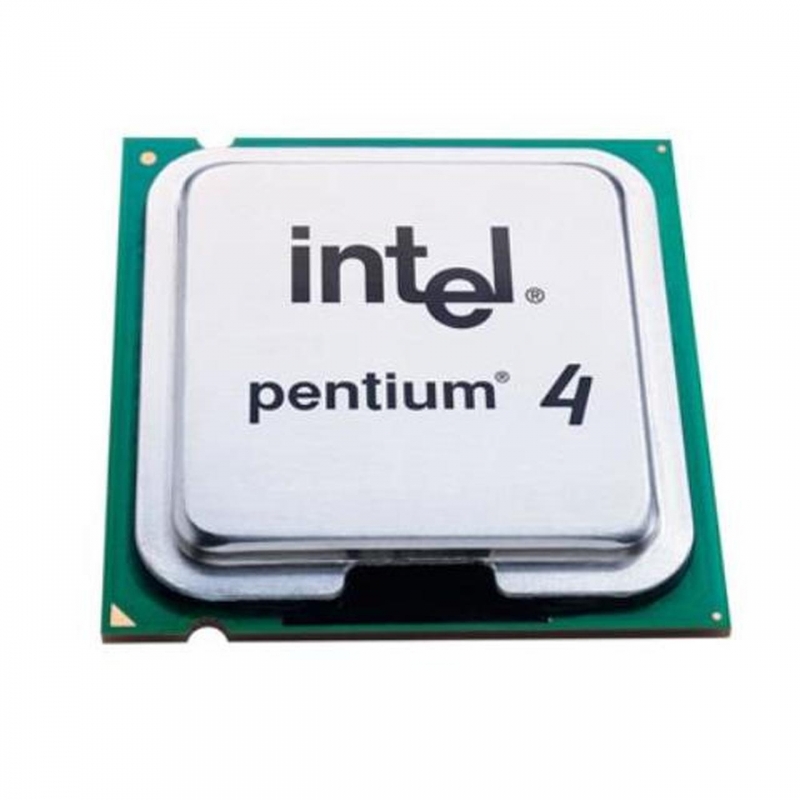 org
org
Intel Pentium 4 processors based on the Willamette core are manufactured with 0.18-micrometer technology. They are based on the Intel NetBurst microarchitecture, which uses the Quad Pumped Bus as the FSB.
Willamette-based Pentium 4 processors are manufactured with two variations of the Flip-Chip Pin Grid Array (FCPGA) form factor, providing for Socket 423 and Socket 478 slots. The voltage supplied to the core (Vcore) for Socket 423 processors is 1.7 V and 1.75 V; for Socket 478 processors, it is 1.75 V.
High performance of Pentium 4 processors is the product of the core architecture and technology, which was refined on the previous generation of processors with the Coppermine core. Furthermore, these processors have significant technological reserve that can be implemented by carefully performing moderate overclocking. Special chipsets designed for Pentium 4 processors and serving as a basis for appropriate motherboards allow the capabilities of the core architecture and high technological potential to be implemented.
When planning overclocking operations (with analysis of advantages and drawbacks), note that as in case of previous models, Pentium 4 processors have fixed multipliers. Because of this, processor overclocking is accomplished exclusively by increasing the FSB clock frequency and, consequently, changing the frequency modes of other computer components.
To successfully accomplish overclocking procedures, it is recommended that you use a motherboard that ensures the required functional capabilities, including hardware monitoring. The chosen motherboard must be compatible with the chosen processor line (Socket 423 or Socket 478). High-quality motherboards allow considerable performance gain when overclocking Pentium 4 processors. For 1.7 GHz (Socket 478) models, correct overclocking procedures often provide performance growth of 20% or more. For some models with a clock frequency of 1.4 GHz (Socket 478), the performance gain is 25%–30%. Remember that overclocking potential depends not only on the operating modes and processor model, but also on the specific processor.
Tables 18.17 and 18.18 outline the results of overclocking for several Pentium 4 1.4 GHz and Pentium 4 1.7 GHz processors. (These materials were obtained from http://www.overclockers.ru, a Russian-language Web site.)
|
|
|
|---|---|
|
SL59U-MALAY-L130A673-0772
|
1.67
|
|
SL59U-MALAY-L130A673-1037
|
1.67
|
|
SL59U-MALAY-L130A673-1056
|
1.
|
|
SL59U-MALAY-L130A673-0774
|
1.75
|
|
SL59U-MALAY-L130A673-0780
|
1.68
|
|
SL59U-MALAY-L130A673-1034
|
1.61
|
|
SL59U-MALAY-L130A673-0840
|
1.79
|
|
SL59U-MALAY-L130A673-0771
|
1.68
|
|
SL59U-MALAY-L130A673-0777
|
1.75
|
|
|
|
|---|---|
|
SLSTG-L129B272-0226-MALAY
|
2.10
|
|
SLSTG-L129B272-0223-MALAY
|
2.10
|
|
SLSTG-L129B272-0222-MALAY
|
2.10
|
|
SL59X-MALAY-L132A473-0683
|
2.09
|
|
SL59X-MALAY-L132A473-0105
|
1.95
|
|
SL59X-MALAY-L132A473-0686
|
1.
|
|
SL5TK-COSTAR-3141A265-1341
|
2.04
|
|
SL5TK-COSTAR-3141A265-1344
|
2.04
|
Computer with Pentium 4 1.5 GHz
System Configuration
-
Processor — Intel Pentium 4 1.5 GHz (Willamette core, 8 KB L1 cache, 256 KB L2 cache, core frequency operation, nominal processor-bus frequency of 100 MHz that ensures a data-transfer frequency of 400 MHz, 1.75 V core supply, Socket 478)
-
Motherboard — Shuttle AV40 (VIA P4X266 chipset)
-
Hard disk — IBM DPTA-372050 (20 GB, 2 MB cache memory, Ultra DMA/66)
-
RAM — 256 MB, DDR266
-
Video adapter — Asus GeForce2
-
CD-ROM drive — Asus CD-S400/A (40x)
-
Operating system — Windows 2000 Server, Service Pack 2
Establishing Overclocking Modes
Overclocking was achieved by increasing the processor-bus frequency.
Testing the System
The following tests were used to investigate the overclocking results: CPUmark 99, FPU WinMark, 3DMark2000, and Video 2000. Testing results are presented in Tables 18.19 and 18.20 and in Figs. 18.34–18.36.
|
|
|
|
|
|
|---|---|---|---|---|
|
100
|
1,500 = 100 × 15
|
89.
|
5,200
|
7,626
|
|
119
|
1,785 = 119 × 15
|
105.0
|
6,170
|
8,643
|
|
|
1,500 = 100 × 15
|
1,785 = 119 × 15
|
||
|
|
879
|
990
|
||
|
|
|
554.
|
661.0
|
|
|
|
14.8
|
15.0
|
||
|
|
49.0
|
58.4
|
||
|
|
498.6
|
638.6
|
||
|
|
36.06
|
42.65
|
||
|
|
|
29.
|
22.04
|
|
|
|
38.54
|
29.38
|
||
|
|
54.10
|
40.34
|
||
Figure 18.34: Pentium 4 1.5 GHz test results (CPUmark 99)
Figure 18.35: Pentium 4 1.5 GHz test results (FPU WinMark)
Figure 18.36: Pentium 4 1.5 GHz test results (3DMark2000)
Computer with Pentium 4 1.7 GHz
System Configuration
-
Processor — Intel Pentium 4 1.
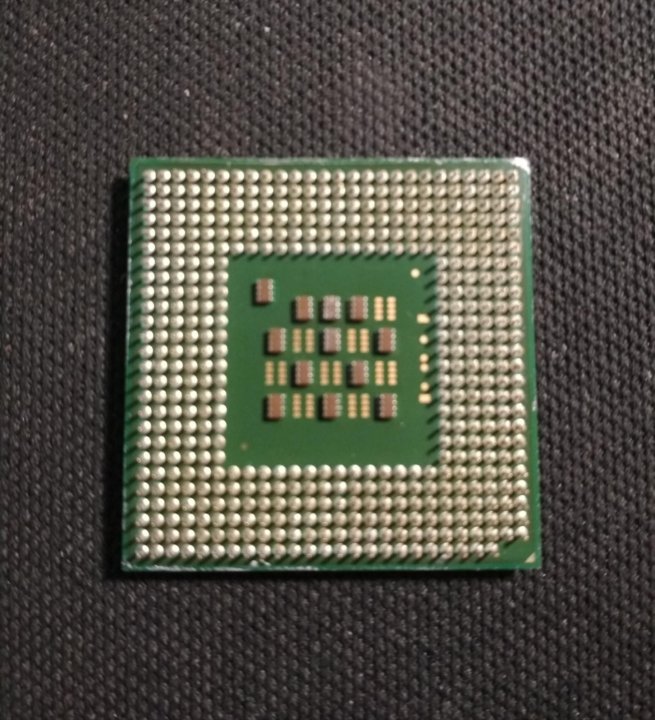 7 GHz (Willamette core, 8 KB L1 cache, 256 KB L2 cache, processor core frequency operation, nominal processor-bus frequency of 100 MHz that ensures a data-transfer rate of 400 MHz, 1.75 V core supply, Socket 423)
7 GHz (Willamette core, 8 KB L1 cache, 256 KB L2 cache, processor core frequency operation, nominal processor-bus frequency of 100 MHz that ensures a data-transfer rate of 400 MHz, 1.75 V core supply, Socket 423) -
Motherboard — Asus P4T (Intel 850 chipset, BIOS 1004 Final, 3/30/01)
-
Hard disk — IBM Deskstar 75GXP (45 GB, 2 MB cache memory, 7,200 rpm, Ultra ATA/100)
-
RAM — Buffalo PC800, 2×128 MB, ECC RDRAM
-
Video adapter — Nvidia GeForce3 64 MB (200 MHz core, 230 MHz memory, DDR)
-
CD-ROM drive — Asus CD-S400/A (40x)
-
Operating system — Windows 2000 Professional (SP1)
Establishing Overclocking Modes
The overclocking modes were set by increasing the processor-bus frequency.
Testing the System
The following tests were used: Business Winstone 2001, SYSmark 2000, and 3DMark2001.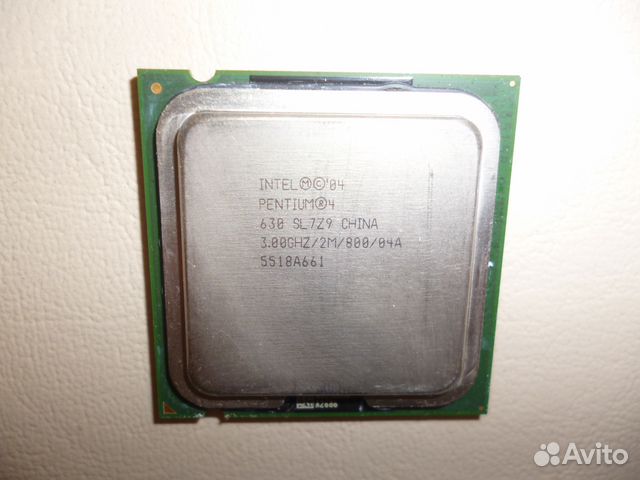 Testing results are presented in Table 18.21 and in Figs. 18.37–18.39.
Testing results are presented in Table 18.21 and in Figs. 18.37–18.39.
|
|
|
|
|
|
|---|---|---|---|---|
|
100
|
1,700 = 100 × 17
|
48.3
|
361
|
5,696
|
|
120
|
2,040 = 120 × 17
|
51.
|
393
|
5,757
|
Figure 18.37: Pentium 4 1.7 GHz test results (Business Winstone 2001)
Figure 18.38: Pentium 4 1.7 GHz test results (SYSmark 2000)
Figure 18.39: Pentium 4 1.7 GHz test results (3DMark2001)
The results in Table 18.21 and in Figs. 18.37–18.39 demonstrate that Pentium 4 processors have significant technological reserve.
secrets of the royal court — Ferra.ru
Tomorrow, January 7, the whole civilized world will celebrate Christmas, that is, the birth (official presentation) by Intel of its latest Pentuim 4 processor on the Northwood core! The new reincarnation of the already familiar processor, going by leaps and bounds ahead of industry standards, promises to be very promising, because . .. however, read about this and our tests of the newest processor tomorrow on this site, and today we would like to talk a little about its predecessor — the well-known Intel Pentium 4 processor based on the Willamette core, which is already installed in more than tens of millions of computers around the world.
.. however, read about this and our tests of the newest processor tomorrow on this site, and today we would like to talk a little about its predecessor — the well-known Intel Pentium 4 processor based on the Willamette core, which is already installed in more than tens of millions of computers around the world.
And there is a reason for such talk — after all, all this (coming) year, Pentium 4 Willamette processors will still be actively produced and sold (see, for example, the roadmap of Intel desktop processors in 2002 in Table 1 ( www.compuferra.ru /pubimages/23639.gif ) or in article www.ferra.ru/online/system/14710 ). Moreover, with the advent of the next 2003, Willamette will not die, because already in the third quarter of this year it will be embodied in the new P4-based Celeron line (although perhaps in a truncated form with a L2 cache of only 128 KB, see Table 1). So, Willamette processors still have a long and active life both on store shelves and in our computers (I ask AMD fans not to throw their two-GHz stones at me — and your turn will come).
In this article, I would like to talk not about the standard (and already known to everyone) variants of the Pentium 4 Willamette, but to look a little into the future and think about its hidden, secret and unused (yet) possibilities — operation on a 533 MHz bus (clock frequency FSB 133 MHz), the use of DDR333 memory (and higher) in conjunction with such a bus and the release of models with a clock speed of more than 2.0 GHz. Perhaps we will never see most of these features in the form of finished products (it already depends entirely on the will of the management of a well-known company), but nothing can forbid us from knowing more about Willamette’s talents, or maybe using them at our own risk.
First of all, about the Quad-Pumped Bus (QDR FSB) processor bus, operating at a clock frequency of 133 MHz (at the same time, the address transmission frequency on this bus is doubled, and the data transmission frequency is quadrupled, that is, for data we have a frequency of 533 MHz and a band bandwidth 4266 MB / s). Processors with such a bus are planned to be released by Intel only in the second quarter of this year and, unfortunately, only for the new Northwood core. At the same time, the Willamette can work perfectly at such a bus frequency, and even now. Theoretically, the higher the frequency of the FSB (Front Side Bus), the higher the performance of the system as a whole. However, in practice, a large FSB bandwidth can «rest» on the low speed of the system memory bus. Take a look at table 2 ( www.ferra.ru/pubimages/23536.gif ) — neither dual-channel RDRAM at 800 MHz (3200 MB / s), nor the latest DDR333 SDRAM at 333 MHz (about 2700 MB / s) can even come close to speeds to QDR FSB-533. And neither RDRAM nor DDR SDRAM is expected to see a speed breakthrough in the near future. That is, the memory will not yet be able to saturate such a fast processor bus with data, and the current QDR FSB 400 MHz with 3200 MB / s should seem to be quite enough. But on the other hand, no one has canceled the delays (latency) that occur when buses work with data packets.
Processors with such a bus are planned to be released by Intel only in the second quarter of this year and, unfortunately, only for the new Northwood core. At the same time, the Willamette can work perfectly at such a bus frequency, and even now. Theoretically, the higher the frequency of the FSB (Front Side Bus), the higher the performance of the system as a whole. However, in practice, a large FSB bandwidth can «rest» on the low speed of the system memory bus. Take a look at table 2 ( www.ferra.ru/pubimages/23536.gif ) — neither dual-channel RDRAM at 800 MHz (3200 MB / s), nor the latest DDR333 SDRAM at 333 MHz (about 2700 MB / s) can even come close to speeds to QDR FSB-533. And neither RDRAM nor DDR SDRAM is expected to see a speed breakthrough in the near future. That is, the memory will not yet be able to saturate such a fast processor bus with data, and the current QDR FSB 400 MHz with 3200 MB / s should seem to be quite enough. But on the other hand, no one has canceled the delays (latency) that occur when buses work with data packets. And these delays can significantly affect the overall performance of the system. Therefore, the excessive (spare) speed of the processor FSB may not be superfluous even with a relatively slow memory. We should not forget about the operation of the processor’s L2 cache — the faster it can be filled with data from the system memory and video memory, the better.
And these delays can significantly affect the overall performance of the system. Therefore, the excessive (spare) speed of the processor FSB may not be superfluous even with a relatively slow memory. We should not forget about the operation of the processor’s L2 cache — the faster it can be filled with data from the system memory and video memory, the better.
The second aspect of our review is working with DDR memory of the PC2700 standard. With the entry of Intel into the market of DDR chipsets for Pentium 4, many fans of this company have a good opportunity to use its processors with cheap and high-speed PC2100 memory (133 MHz memory bus clock). Meanwhile, competitors (for example, SiS) are already releasing chipsets with support for PC2700 memory, which looks much more balanced in systems based on Pentium 4 (see, for example, our review on www.ferra.ru/online/system/14788 ). Intel plans also include a chipset for the PC2700, but we will probably not see it very soon. And I want to know the possibilities of Pentium 4 with such memory even now, since the SiS645 chipset has, unfortunately, a rather high latency when working with memory, which does not allow to fully realize the potential of such a bundle, and systems based on SiS645 with PC2700 often lose even i845D with PC2100 , since the chipset from Intel has a lower latency (for details, see the review on www.ferra.ru/online/system/14788 ). Therefore, our task now is to see what a combination of Pentium 4 and PC2700 based on an Intel chipset with low latency can actually do — can it finally overtake the recognized leader — a platform with RDRAM PC800?
And I want to know the possibilities of Pentium 4 with such memory even now, since the SiS645 chipset has, unfortunately, a rather high latency when working with memory, which does not allow to fully realize the potential of such a bundle, and systems based on SiS645 with PC2700 often lose even i845D with PC2100 , since the chipset from Intel has a lower latency (for details, see the review on www.ferra.ru/online/system/14788 ). Therefore, our task now is to see what a combination of Pentium 4 and PC2700 based on an Intel chipset with low latency can actually do — can it finally overtake the recognized leader — a platform with RDRAM PC800?
Finally, our third task (in light of the long life of the Willamette core) will be to look at the limiting possibilities of the frequency of this core (with a manufacturing technology of 0.18 microns). For the next year, there are no processors on this core with a frequency above 2 GHz (yet), but in fact the technological limit for this core is slightly higher — around 2.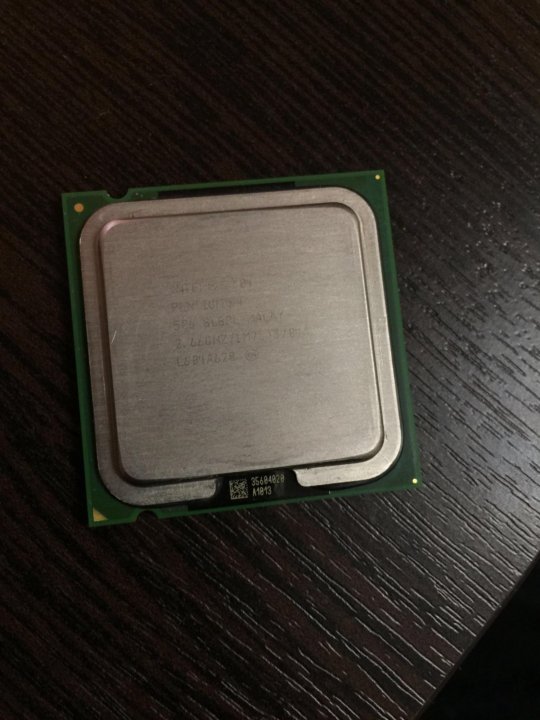 2 GHz (perhaps later Celeron Willamette processors will reach it). Let’s see what gives a 10 percent increase in core clock speed.
2 GHz (perhaps later Celeron Willamette processors will reach it). Let’s see what gives a 10 percent increase in core clock speed.
So, let’s move on to the test results. We used our standard set of tests and the methodology described earlier on www.ferra.ru/online/system/14788 ). For tests at a system bus (FSB) frequency increased to 133 MHz, a Pentium 4 1500 MHz processor of the D0 stepping was used (processors of this stepping, as a rule, can operate at a frequency of 2 GHz and higher, that is, on a 133 MHz bus, this processor had a «standard» clock frequency of 2 GHz). The ASUS P4B266 motherboard was used as a platform (see www.ferra.ru/online/system/14788 ) with a «New Year’s» version of the BIOS (see www.ferra.ru/online/system/15062 ), and two high-quality DIMM256 modules served as memory «a la PC2700» PC2100 manufactured by Kingston (on chips from Samsung). This memory worked fine with 2-2-2-6 timings up to at least 177 MHz (DDR350). For comparison, we used platforms with Pentium 4 2 GHz and ASUS P4T-E (RDRAM PC800), P4B266 (PC2100) and P4B (PC133) boards at standard frequencies. The latest processor was also used at a frequency of 2.2 GHz (FSB=110 MHz, memory frequency — 146 MHz) to evaluate the maximum speed capabilities of the core. Processors and boards were provided by Nix companies ( www.nix.ru ) and Pyrite ( www.pirit.ru ), and memory manufactured by Kingston and Transcend — by AK-Cent Microsystems ( www.ak-cent.ru ).
The latest processor was also used at a frequency of 2.2 GHz (FSB=110 MHz, memory frequency — 146 MHz) to evaluate the maximum speed capabilities of the core. Processors and boards were provided by Nix companies ( www.nix.ru ) and Pyrite ( www.pirit.ru ), and memory manufactured by Kingston and Transcend — by AK-Cent Microsystems ( www.ak-cent.ru ).
Thus, in these tests there are three non-standard (at the moment) configurations designed to explore the potential capabilities of the Pentium 4 + DDR platform:
)
2. Pentium 4 2 GHz on 133 MHz bus with PC2700 memory (167 MHz)
3. Pentium 4 2.2 GHz on a 110 MHz bus with PC2100 memory (146 MHz) =133) does not exist on the ASUS P4B266 board, the second of the indicated configurations was implemented on it by setting the processor clock frequency to 132 MHz and the memory to 176 MHz (4:3). At the same time, the memory worked a little faster than the PC2700, but the processor was a little slower.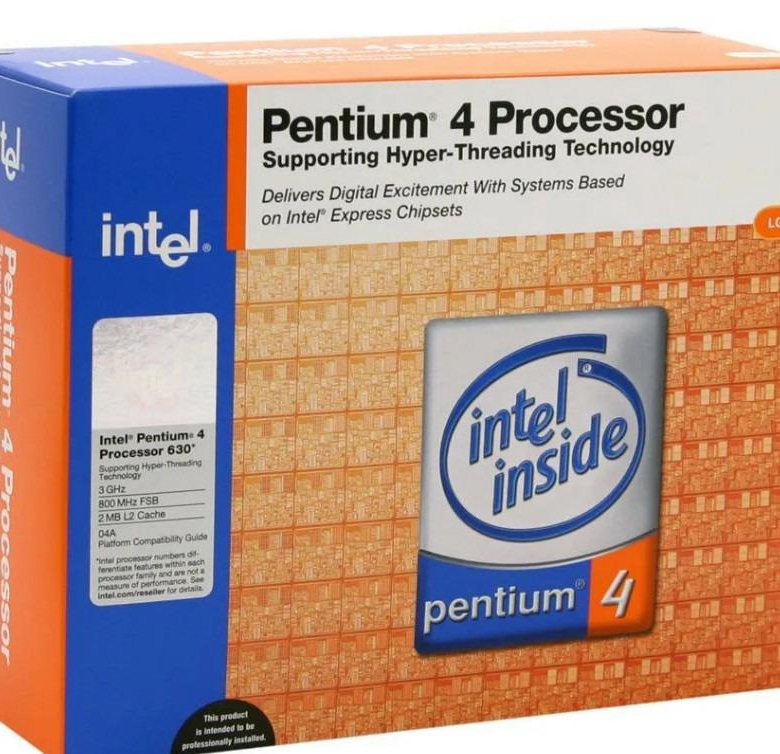 In theory, this was supposed to «mutually compensate» the performance of the system to the level of «2 GHz + PC2700». However, we should not forget that the AGP bus worked somewhat faster than its standard frequencies — 88 MHz instead of 66.7.
In theory, this was supposed to «mutually compensate» the performance of the system to the level of «2 GHz + PC2700». However, we should not forget that the AGP bus worked somewhat faster than its standard frequencies — 88 MHz instead of 66.7.
Platform test results are shown in the charts below. Based on the analysis of these data, the following conclusions can be drawn. First of all — about the speed of the memory («yellow» diagrams). Judging by Sandra 001, the PC800 still has no competitors, although the P4/533+PC2700 is getting closer and closer to it. On the other hand, the latter has an excellent memory reading speed (judging by Cachemem and Science Mark V1.0), which noticeably outperforms the PC800. In addition, both systems with FSB=533 MHz demonstrate excellent (low) latency when working with memory, significantly outperforming all the others — that’s a clear advantage of this bus, even with insufficiently fast system memory. Let’s see how it shows up in application tests./data/P4-Abit-TH7-800.jpg)
Even in the old CPUmark 99, which is not very sensitive to memory speed and is more favorable to increasing the processor frequency, the P4/533+PC2700 system is in the lead, yielding only to P4 at 2.2 GHz. The tests of the SysMark 2001 package also show the complete superiority of the «P4/533+PC2700» — this system managed to overtake even the hitherto unshakable leader — the i850+PC800, yielding only to a faster processor. Note that another system based on P4/533 with slower PC2100 memory is almost on par with PC800 (it’s time to remember about latency, good for P4/533+DDR and bad for i850+PC800). In the Science Mark V1.0 test of scientific calculations (only the test that is sensitive to memory speed was used), the leader positions with RDRAM are still strong, and only a faster processor with DDR memory can overcome it, although «P4 / 533 + PC2700» is already being selected close to them. The Video 2000 test is not very successful in demonstrating the speed of the i845D chipset, because, for unknown reasons, this chipset is noticeably slower than all the others in this test (see www.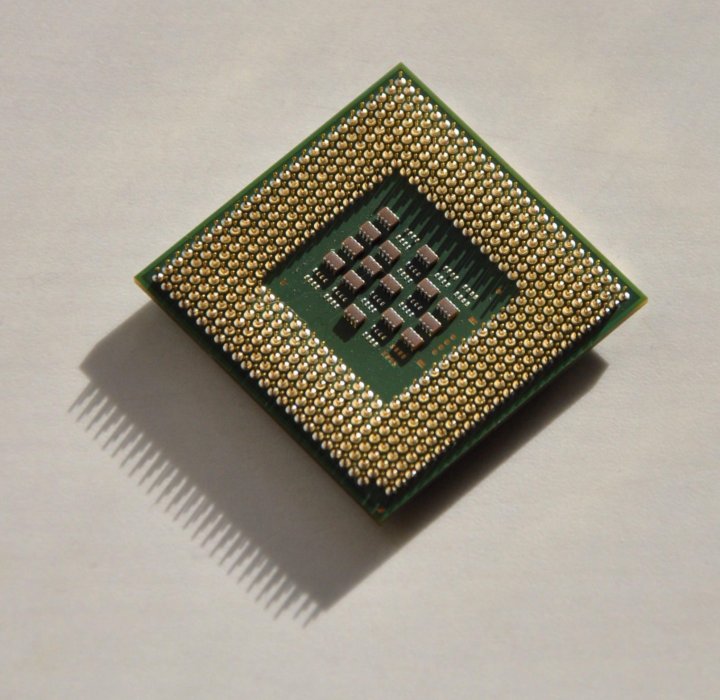 ferra.ru/online/system/14788 ). However, in similar tests of directly measuring the speed of working with video (MPEG4 encoding in FlasK and encoding in Windows Media Encoder 7.1), the situation is different — in FlasK with a DivX 4.11 encoder, the P4/533 + PC2700 system almost caught up with the PC800 (I note that there are two systems with PC2100 they show equal speed despite the different FSB), and in WME 7.1 both systems still outperform PC800 at FSB=533 MHz (!), although the faster processor is out of competition everywhere. Archiving in WinRAR 2.90 (with large vocabulary and maximum compression) again puts both systems at FSB=533 MHz out of the competition, and they confidently compete even with a faster processor at a slower FSB! WinZip works mostly «inside» the processor, so P4 2.2 GHz wins by a noticeable margin, although here both systems outperform RDRAM at FSB=533 MHz!
ferra.ru/online/system/14788 ). However, in similar tests of directly measuring the speed of working with video (MPEG4 encoding in FlasK and encoding in Windows Media Encoder 7.1), the situation is different — in FlasK with a DivX 4.11 encoder, the P4/533 + PC2700 system almost caught up with the PC800 (I note that there are two systems with PC2100 they show equal speed despite the different FSB), and in WME 7.1 both systems still outperform PC800 at FSB=533 MHz (!), although the faster processor is out of competition everywhere. Archiving in WinRAR 2.90 (with large vocabulary and maximum compression) again puts both systems at FSB=533 MHz out of the competition, and they confidently compete even with a faster processor at a slower FSB! WinZip works mostly «inside» the processor, so P4 2.2 GHz wins by a noticeable margin, although here both systems outperform RDRAM at FSB=533 MHz!
Let’s move on to the tests of three-dimensional graphics. In 3Dmark 2001 (DirectX 8) and 3Dmark 2000 (DirectX 7), both systems at FSB=533 MHz bypass RDRAM and almost overtake the faster processor, while the «standard» i845D cannot even come close to them.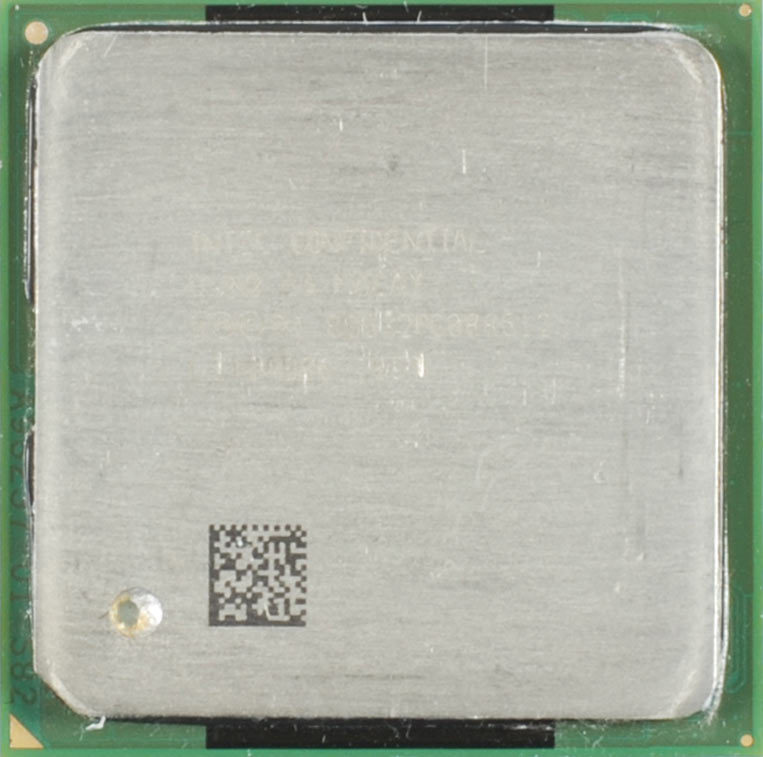 So think after that about the intricacies of technological progress and the correctness of priorities in the marketing policy of a well-known company. On OpenGL, our «533» heroes also do not lose face, and in DroneZ Benchmark, the system on P4 / 533 + PC2700 is generally the undisputed leader and bypasses an even faster processor, yielding to i850 + PC800 only in the traditional RDRAM strong point — the Quake III test . Note that even with the PC2100, the P4/533 processor looks good here too. Professional OpenGL calculations in the SPEC viewperf v6.1.2 package only confirm the leadership of our heroes — both configurations with P4/533 lead in half of the tests, and P4/533+PC2700 is generally out of competition.
So think after that about the intricacies of technological progress and the correctness of priorities in the marketing policy of a well-known company. On OpenGL, our «533» heroes also do not lose face, and in DroneZ Benchmark, the system on P4 / 533 + PC2700 is generally the undisputed leader and bypasses an even faster processor, yielding to i850 + PC800 only in the traditional RDRAM strong point — the Quake III test . Note that even with the PC2100, the P4/533 processor looks good here too. Professional OpenGL calculations in the SPEC viewperf v6.1.2 package only confirm the leadership of our heroes — both configurations with P4/533 lead in half of the tests, and P4/533+PC2700 is generally out of competition.
So, let’s summarize briefly. The Pentium 4 Willamette processor on the 533(133) MHz bus actually opens up new speed horizons for systems with DDR memory, and the advantages of the PC2700 over the PC2100 become obvious here. Finally, a worthy alternative to systems with RDRAM PC800 has been found.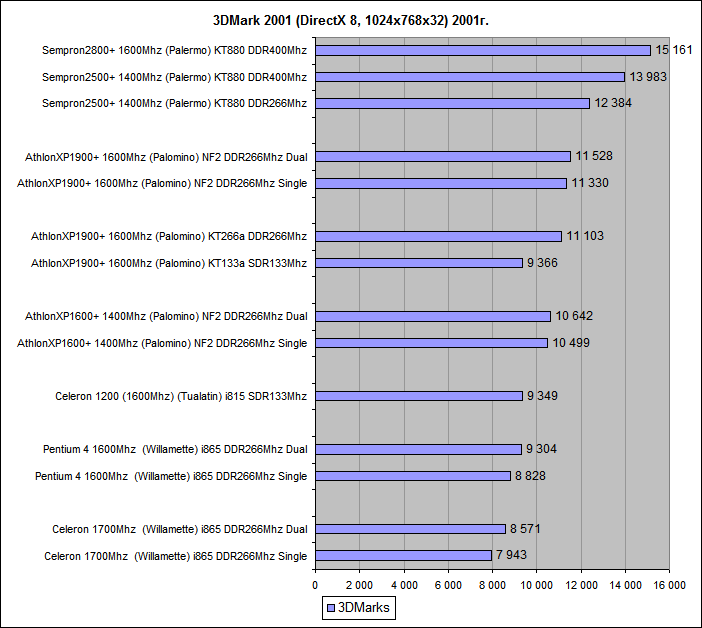 And we only have to regret that a respected company does not want to see such simple ways to speed up their favorite processors and forces the user to follow the not always correct paths of technical progress. Although, who knows — maybe the plans of this company will change, and it will soon be able to please us with unforeseen novelties. However, the release of the Pentuim 4 processor based on the Northwood core with a 512 KB L2 cache may slightly change the disposition in this clan. But read about it tomorrow on the site www.ferra.ru . Merry Christmas!
And we only have to regret that a respected company does not want to see such simple ways to speed up their favorite processors and forces the user to follow the not always correct paths of technical progress. Although, who knows — maybe the plans of this company will change, and it will soon be able to please us with unforeseen novelties. However, the release of the Pentuim 4 processor based on the Northwood core with a 512 KB L2 cache may slightly change the disposition in this clan. But read about it tomorrow on the site www.ferra.ru . Merry Christmas!
Pentium 4 — frwiki.wiki
See P4 for articles of the same name.
The Pentium 4 , manufactured by Intel, is the seventh generation x86 microprocessor inaugurating the NetBurst microarchitecture. It replaces the P6 generation started by the Pentium Pro.
The stated goal of this new microarchitecture is (relatively) easy frequency growth. Indeed, during the launch of this processor, the operating frequency of the processor became an excellent marketing argument.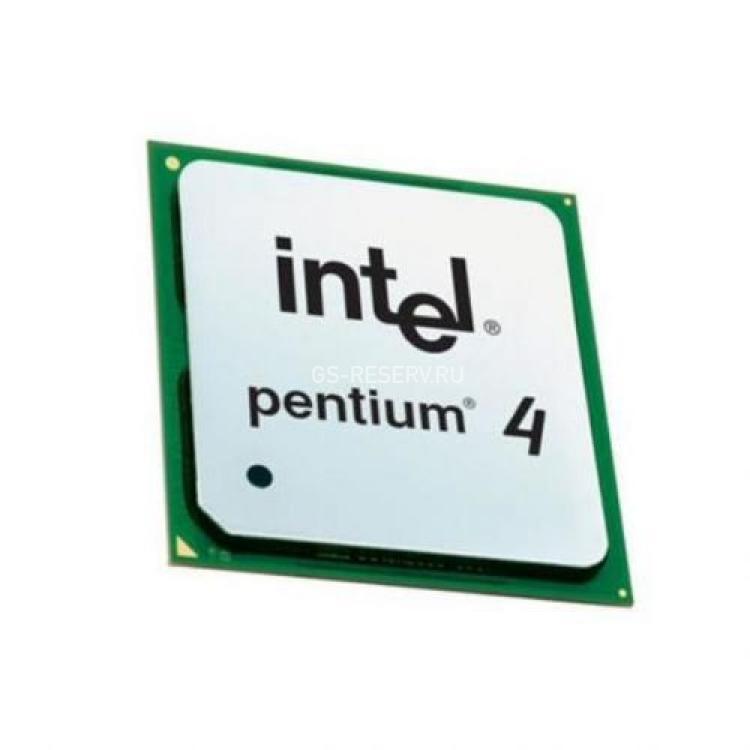 Therefore, Intel decides to offer a processor with a higher operating frequency than its predecessors or its main competitor AMD’s Athlon XP. This choice results in the use of very long pipelines, sacrificing the performance/frequency ratio.
Therefore, Intel decides to offer a processor with a higher operating frequency than its predecessors or its main competitor AMD’s Athlon XP. This choice results in the use of very long pipelines, sacrificing the performance/frequency ratio.
Like the Pentium II and Pentium III, the professional version of the Pentium 4 was sold under the Xeon brand, while the low-end version was sold under the Celeron brand.
The NetBurst architecture has been phased out since 2006 due to power consumption and excessive heat dissipation; moreover, its use in laptops too often causes the fan to trip (which is why Intel developed the Pentium M). Due to high heat dissipation, Intel was unable to reach the originally planned frequency of the Pentium 4 (7 to 10 GHz).
CV
- 1 Willamette
- 2 Northwood
- 3 Prescott
- 4 Cedar mill
- 5 Name Pentium 4
- 6 Reasons for Pentium 4 Discontinuation
-
7 Applications
- 7.
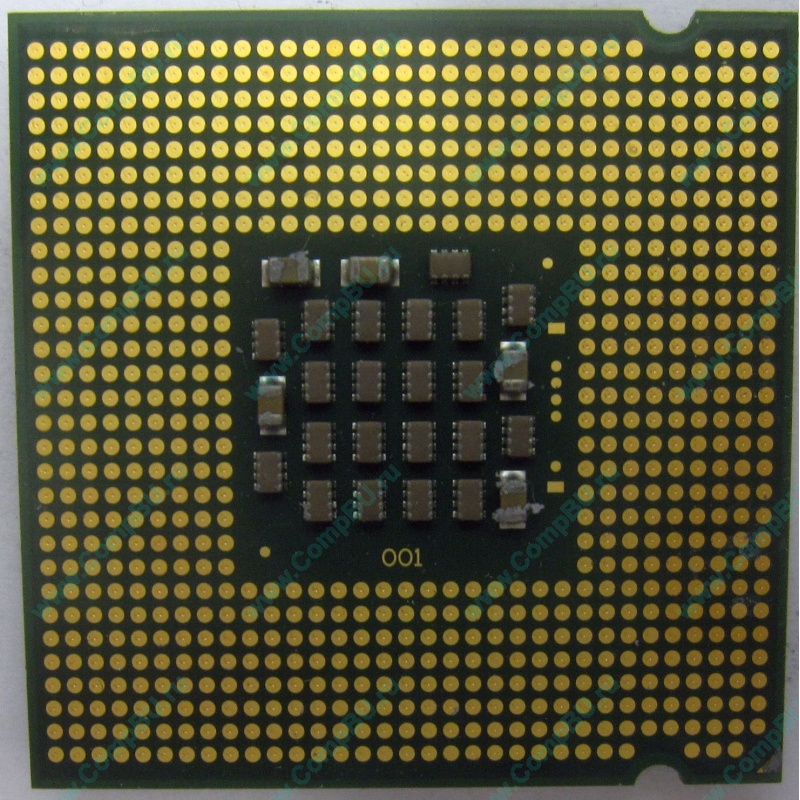 1 Notes and references
1 Notes and references - 7.2 Related Articles
- 7.3 External links
- 7.
Willamette
Intel Pentium 4 Willamette (socket 478), top view
Intel Pentium 4 Willamette (socket 478), bottom view
The first Pentium 4 with 0.18 µm engraving ran from 1.3 to 2.0 GHz on socket 423, then on socket 478. The processor bus ran on frequency of 100 MHz. Level 1 cache — 8K bytes for data and 12K micro-ops for instructions located in the trace cache (which stores instructions in decoded form unlike conventional instruction caches). The level 2 cache is 256 KB.
The high frequency is achieved, among other things, by lengthening the execution pipeline, which increases from 10 stages for an Athlon or Pentium III to 20 stages for a Pentium 4.
Willamette was a huge disappointment when it first came out, but Northwood revived NetBurst’s image.
Northwood
Etching pass 0. 13 µm (µm), 21 pipeline stages, 512 KB cache, level 2 . There are three versions:
13 µm (µm), 21 pipeline stages, 512 KB cache, level 2 . There are three versions:
- A: 1.6-2.8 GHz ; Processor bus 100 MHz
- B: 2.26 to 3.2 GHz ; Processor bus 133 MHz ( Hyper-Threading appeared with version 3.06 GHz )
- C: 2.4 to 3.4 GHz ; Processor bus 200 MHz ; Hyper Threading
Socket 478 is used in this processor range.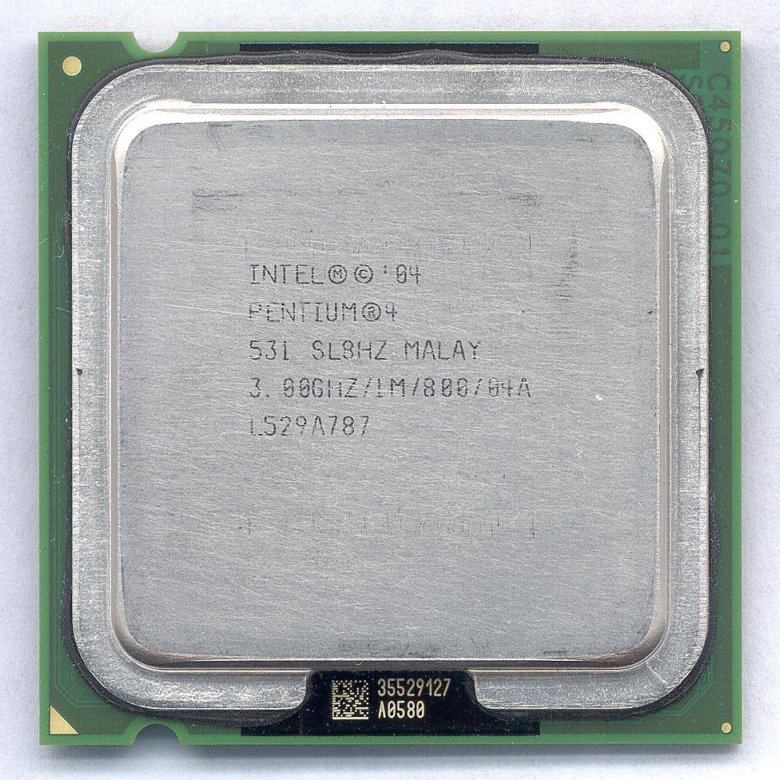
The
Pentium 4 Extreme Edition is a derivative of Northwood with 2 MiB of Level 3 cache. The L1 instruction cache now accepts up to 12000 pre-decoded RISC instructions ( reduced instruction set calculations ) , differs from standard models which retain 8088 compatible CISC instructions.
Prescott
Intel Pentium 4 Prescott, top view
Intel Pentium 4 Prescott, bottom view
Released in 2004, this name hides a deep evolution of NetBurst, which includes 31 pipeline stages and modification at the ALU level (on Prescott single-speed, on Northwood — two-speed).
Level 1 data cache grows to 16 KB, Level 2 cache to 1 MB and then to 2 MB. Thus, 2 new versions of Pentium 4 appear:
- E: 2.26 to 3.4 GHz; Processor bus 133/200 MHz
- F: 3.2 to 3.8 GHz; 200 MHz processor bus and Intel 64 technology
The
Pentium 4 Extreme Edition is a Prescott derivative with 2 MiB of Level 2 cache.
Intel uses a new numbering system for future versions of the Pentium 4.
5×0 models are only equipped with Hyper-Threading , 5x0J models are models that additionally use the Execute disable bit, and 5×1 models additionally use Intel 64 technology. The 6xx series appeared in 2005. A feature of this series compared to the previous one is the doubling of the L2 cache to 2 MB . All 6xx models support Hyper-Threading , Execute Disable Bit and Intel 64 technologies. The 6×2 models are additionally equipped with Vanderpool technology for virtualization.
| Model name | Frequency | Front bus | Multiplication | L1 cache | L2 cache | TDP | Connector |
|---|---|---|---|---|---|---|---|
| Pentium 4 672 | 3.80 GHz | 800 MT/s | 19 × | 16 KB | 2 MB | 115 W | LGA 775 |
| Pentium 4670 | 3. 80 GHz 80 GHz
|
800 MT/s | 19 × | 16 KB | 2 MB | 115 W | LGA 775 |
| Pentium 4662 | 3.60 GHz | 800 MT/s | 18× | 16 KB | 2 MB | 115 W | LGA 775 |
| Pentium 4660 | 3.60 GHz | 800 MT/s | 18× | 16 KB | 2 MB | 115 W | LGA 775 |
| Pentium 4650 | 3.40 GHz | 800 MT/s | 17× | 16 KB | 2 MB | 115 W | LGA 775 |
| Pentium 4640 | 3.20 GHz | 800 MT/s | 16× | 16 KB | 2 MB | 84 W | LGA 775 |
| Pentium 4.630 | 3.00 GHz | 800 MT/s | 15× | 16 KB | 2 MB | 84 W | LGA 775 |
| Pentium 4571 | 3. 80 GHz 80 GHz
|
800 MT/s | 19 × | 16 KB | 1 MB | 115 W | LGA 775 |
| Pentium 4.570J | 3.80 GHz | 800 MT/s | 19 × | 16 KB | 1 MB | 115 W | LGA 775 |
| Pentium 4561 | 3.60 GHz | 800 MT/s | 18× | 16 KB | 1 MB | 115 W | LGA 775 |
| Pentium 4560J | 3.60 GHz | 800 MT/s | 18× | 16 KB | 1 MB | 115 W | LGA 775 |
| Pentium 4560 | 3.60 GHz | 800 MT/s | 18× | 16 KB | 1 MB | 115 W | LGA 775 |
| Pentium 4.551 | 3.40 GHz | 800 MT/s | 17× | 16 KB | 1 MB | 115 W | LGA 775 |
| Pentium 4550J | 3.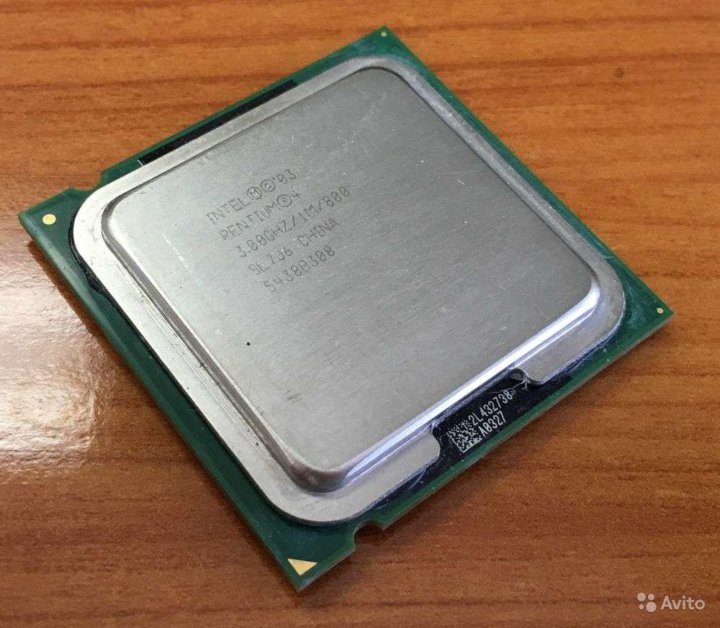 40 GHz 40 GHz
|
800 MT/s | 17× | 16 KB | 1 MB | 115 W | LGA 775 |
| Pentium 4550 | 3.40 GHz | 800 MT/s | 17× | 16 KB | 1 MB | 115 W | LGA 775 |
| Pentium 4.541 | 3.20 GHz | 800 MT/s | 16× | 16 KB | 1 MB | 84 W | LGA 775 |
| Pentium 4540J | 3.20 GHz | 800 MT/s | 16× | 16 KB | 1 MB | 84 W | LGA 775 |
| Pentium 4540 | 3.20 GHz | 800 MT/s | 16× | 16 KB | 1 MB | 84 W | LGA 775 |
| Pentium 4531 | 3.00 GHz | 800 MT/s | 15× | 16 KB | 1 MB | 84 W | LGA 775 |
| Pentium 4 530J | 3. 00 GHz 00 GHz
|
800 MT/s | 15× | 16 KB | 1 MB | 84 W | 478, LGA 775 |
| Pentium 4530 | 3.00 GHz | 800 MT/s | 15× | 16 KB | 1 MB | 84 W | 478, LGA 775 |
| Pentium 4.524 | 3.06 GHz | 533 MT/s | 23× | 16 KB | 1 MB | 84 W | LGA 775 |
| Pentium 4.521 | 2.80 GHz | 800 MT/s | 14× | 16 KB | 1 MB | 84 W | LGA 775 |
| Pentium 4.520J | 2.80 GHz | 800 MT/s | 14× | 16 KB | 1 MB | 84 W | LGA 775 |
| Pentium 4.520 | 2.80 GHz | 800 MT/s | 14× | 16 KB | 1 MB | 84 W | LGA 775 |
Pentium 4. 511 511
|
2.80 GHz | 533 MT/s | 21 × | 16 KB | 1 MB | 84 W | 478, LGA 775 |
| Pentium 4 506 | 2.66 GHz | 533 MT/s | 20 × | 16 KB | 1 MB | 84 W | LGA 775 |
| Pentium 4 505J | 2.66 GHz | 533 MT/s | 20 × | 16 KB | 1 MB | 84 W | LGA 775 |
| Pentium 4 505 | 2.66 GHz | 533 MT/s | 20 × | 16 KB | 1 MB | 84 W | LGA 775 |
Cedar Mill
Cedar Mill hearts are engraved in 65nm unlike Prescott which is engraved in 90nm . This allowed Intel to test their new engraving accuracy before using it on their new processors. An increase in the degree of etching made it possible to reduce heat generation compared to their counterpart with a length of waves 90 nm .
This allowed Intel to test their new engraving accuracy before using it on their new processors. An increase in the degree of etching made it possible to reduce heat generation compared to their counterpart with a length of waves 90 nm .
On all processors we find Hyper-Threading Technology , Execute Disable Bit , Intel 64 and Intel SpeedStep . As for numbering, compared to the latest Prescott series, only third digits change, going from 0 or 2 to 1. Unlike Prescott, Intel never sold Cedar Mill with Vanderpool technology support for virtualization, the founder wished to reserve this functionality for some models dual-core version (Pentium D Presler).
| Model name | Frequency | front bus | Multiplication | L1 cache | L2 cache | TDP | Connector |
|---|---|---|---|---|---|---|---|
| Pentium 4 671 | 3.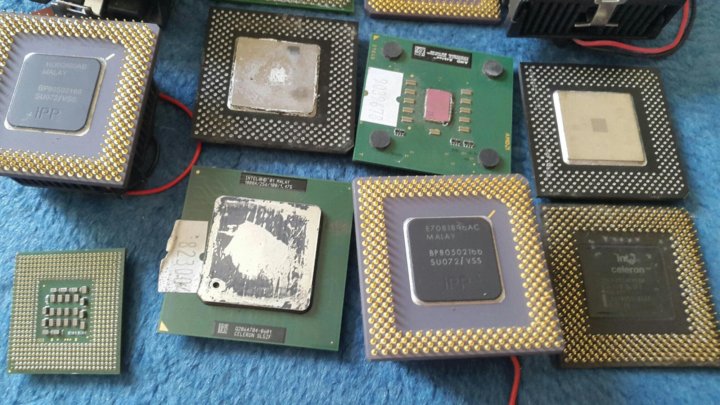 80 GHz 80 GHz
|
800 MT/s | 19 × | 16 KB | 2 MB | 115 W | LGA 775 |
| Pentium 4661 | 3.60 GHz | 800 MT/s | 18× | 16 KB | 2 MB | 115 W | LGA 775 |
| Pentium 4 651 | 3.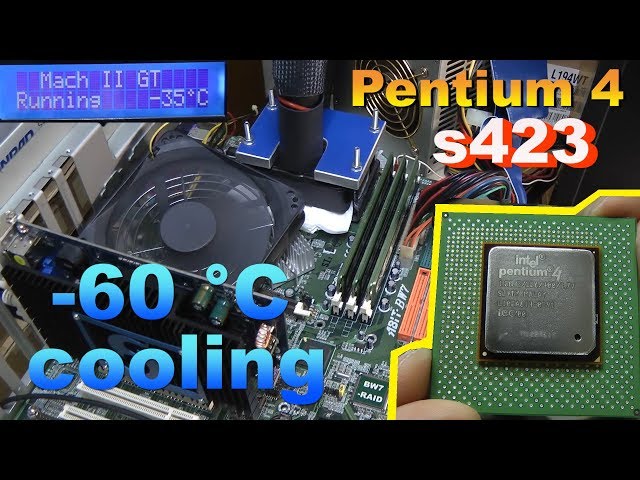 40 GHz 40 GHz
|
800 MT/s | 17× | 16 KB | 2 MB | 115 W | LGA 775 |
| Pentium 4641 | 3.20 GHz | 800 MT/s | 16× | 16 KB | 2 MB | 84 W | LGA 775 |
| Pentium 4631 | 3.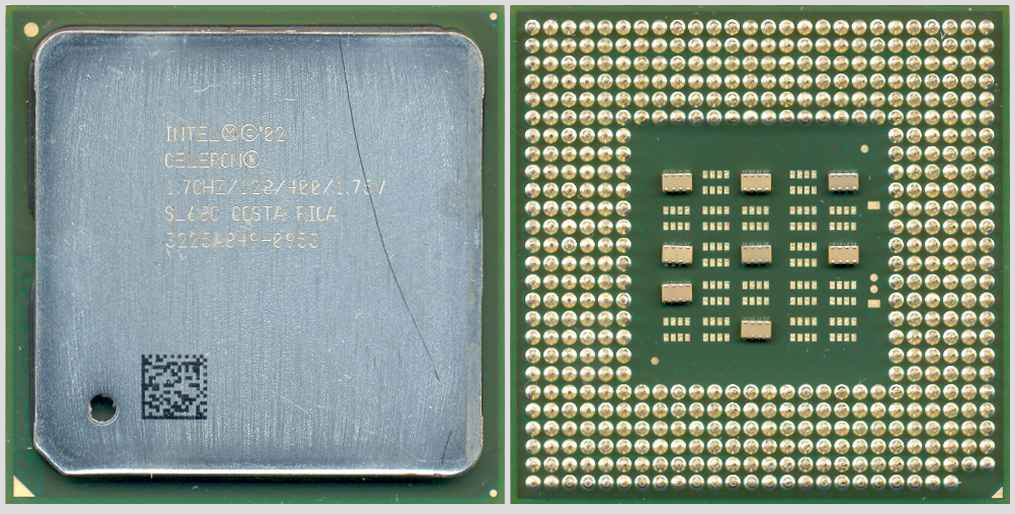 00 GHz 00 GHz
|
800 MT/s | 15× | 16 KB | 2 MB | 84 W | LGA 775 |
Denomination Pentium 4
Intel’s new processor name comes with socket 775 :
- Series 3xx: Celeron D and Celeron M
- 5xx series: Pentium 4 with 1 MB Level 2 Cache, 2.66 to 3.8 GHz
- 5×1 for versions with Intel 64
- 6xx series: Pentium 4 with 2 MB Level 2 Cache, 3.
 0 to 3.8 GHz
0 to 3.8 GHz
- 6×1 for Cedar Mill versions (one Prescott per 0.65 µm )
- 6×2 for versions with VT ( virtualization technology )
- 8 Series: Pentium D with 2×1 MB Level 2 Cache, 2.66 to 3.2 GHz
- 9xx series: Pentium D with 2×2 MB Level 2 Cache, 2.8 to 3.6 GHz
The 7xx series denotes Pentium M processors based on the evolution of the Pentium III- S and thus on a modified Intel P6 architecture.
Reasons for Pentium 4 to stop production
The Pentium 4, like other NetBurst processors, consumed too much. The limits of the architecture were reached due to the increase in frequency made difficult by heat dissipation. As an anecdote, it should be noted that for more than five years after its replacement, the Pentium 4 remained a consumer processor that could be overclocked to a maximum frequency of more than 8 GHz , even if the record was broken — a few MHz — on January 18, 2010, on a Celeron D (with the same architecture as the Pentium 4). This record has since been broken by AMD with its «bulldozer» architecture in September 2011.
The limits of the architecture were reached due to the increase in frequency made difficult by heat dissipation. As an anecdote, it should be noted that for more than five years after its replacement, the Pentium 4 remained a consumer processor that could be overclocked to a maximum frequency of more than 8 GHz , even if the record was broken — a few MHz — on January 18, 2010, on a Celeron D (with the same architecture as the Pentium 4). This record has since been broken by AMD with its «bulldozer» architecture in September 2011.
Applications
Notes and links
- ↑ Testing CPU-Z 8.1 GHz with Pentium 4631, originally on Cedar Mill 3 GHz , Canard PC
-
↑ Checking CPU-Z with frequency 8.
/data/P4-800.jpg)

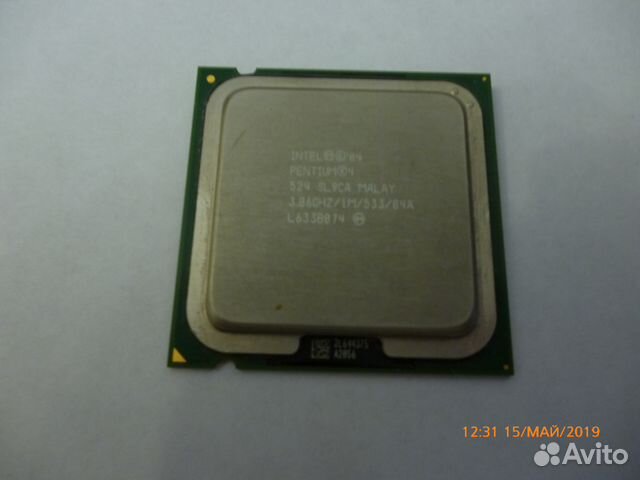 91
91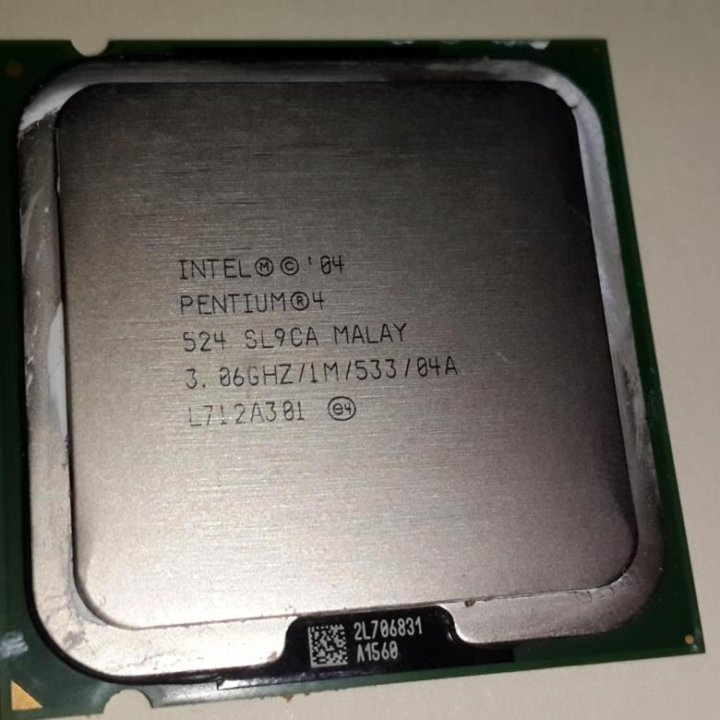 ru)
ru)
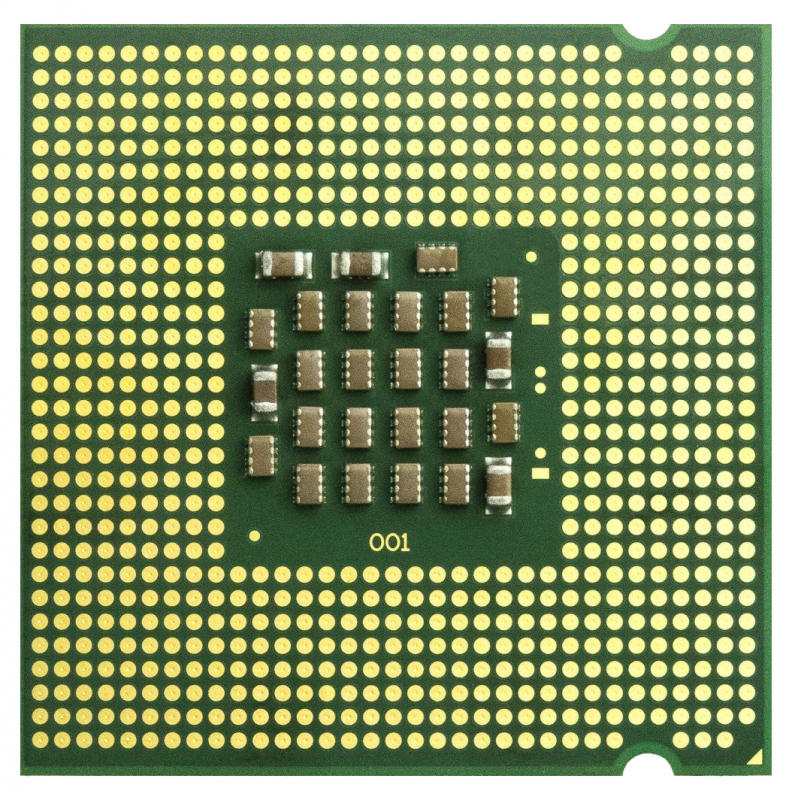 95
95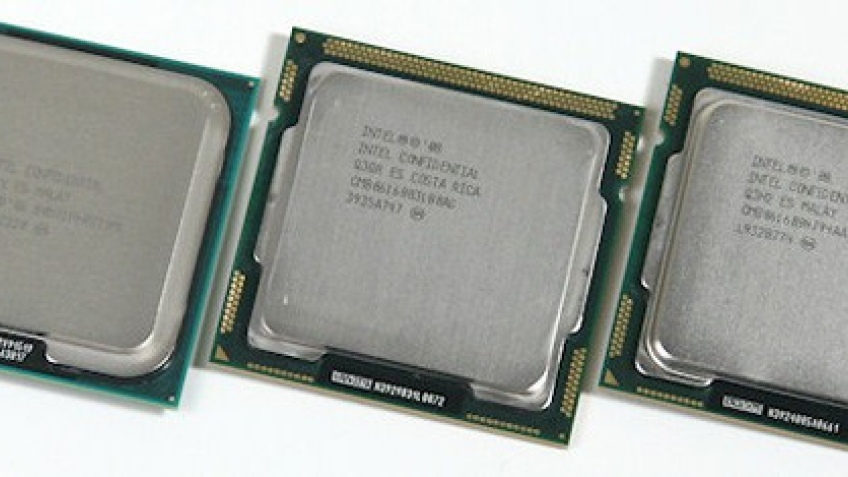 1
1 6
6 18
18 1
1